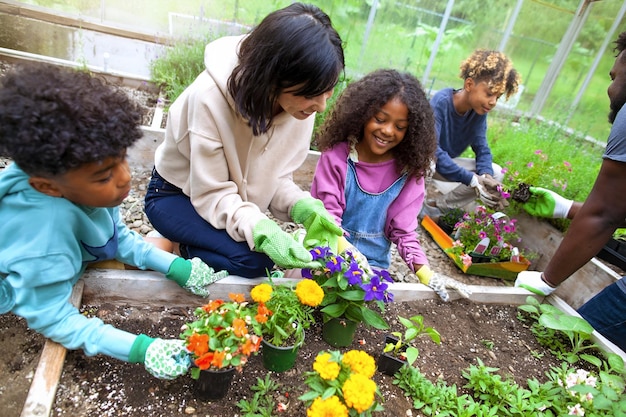Slow Living in the US: Finding Balance in a Fast-Paced World

The Slow Living movement in the US is a conscious effort to decelerate daily life, emphasizing meaningful experiences and connections over relentless productivity and consumption. It promotes savoring moments, prioritizing well-being and fostering a deeper appreciation for simplicity and quality in a culture often defined by speed and excess.
In the hustle and bustle of American life, where speed and efficiency often reign supreme, a counter-movement is gaining momentum: the Slow Living movement. It invites individuals to step off the treadmill of constant activity and rediscover the joy of a more deliberate and meaningful existence.
What is the Slow Living Movement?
The Slow Living movement stands as a direct response to the pervasive fast-paced culture that dominates modern society. It’s an invitation to intentionally slow down, savor each moment, and prioritize quality over quantity. But what exactly does this entail?
At its core, the Slow Living movement is about intentionally slowing down various aspects of life. This isn’t about doing everything at a snail’s pace, but rather making conscious choices about how to spend time and energy, focusing on activities and experiences that bring meaning and joy.
Key Principles of Slow Living
Several core principles underpin the Slow Living philosophy, guiding individuals toward a more intentional and fulfilling lifestyle.
- Mindfulness: Paying attention to the present moment without judgment, fully engaging in the task at hand.
- Simplicity: Embracing a minimalist approach to possessions and commitments, focusing on what truly matters.
- Connection: Nurturing relationships with family, friends, and community, fostering a sense of belonging.
- Sustainability: Making choices that are environmentally responsible and contribute to a healthier planet.

Ultimately, the Slow Living movement is a personal journey. It’s about finding a balance that works for you, creating a life that is both meaningful and sustainable in the long term. It’s a conscious decision to resist the pressures of a fast-paced world and embrace a more intentional way of living.
The Origins of Slow Living
While the Slow Living movement seems particularly relevant to our modern, fast-paced world, its roots can be traced back to the late 1980s in Italy. The movement emerged as a reaction against the opening of a McDonald’s restaurant near the Spanish Steps in Rome, a site of great cultural significance.
Carlo Petrini, an Italian journalist and activist, spearheaded the “Slow Food” movement as a protest against the homogenization of food culture and the encroachment of fast food. This initial protest against fast food quickly evolved into a broader philosophy that extended beyond the realm of cuisine.
The Slow Food Foundation and its impact
The Slow Food movement went global, with the creation of the Slow Food Foundation for Biodiversity and the Terra Madre network of food communities. It helped people from many different countries rediscover diverse flavors and traditional foodways. This helped bring the slow approach to living to a wider audience, beyond Europe.
The Slow Food movement’s success paved the way for other “slow” movements, including Slow Cities (Cittaslow), which promotes urban planning that prioritizes quality of life, pedestrian-friendly streets, and local economies. The basic principles and ideals of the Slow Food movement were eventually applied to a variety of aspects of modern living, including travel, technology, fashion, and even parenting.
The origins of the Slow Living movement are rooted in a desire to preserve cultural heritage, resist the homogenizing forces of globalization, and reclaim control over the pace of life. It is an ongoing effort to balance technology and modernization with the simple things in life, and has spread from the table to many other aspects of modern culture.
Slow Living Practices for a Balanced Life
Embracing the Slow Living movement doesn’t require a complete overhaul of your lifestyle. It’s about incorporating small, intentional practices into your daily routine that promote mindfulness, connection, and well-being. Here are some practical tips to cultivate a slower, more balanced life:
It may be useful to start by identifying area of your current life that feel rushed, stressful, or disconnected from. Then, try incorporating some of the following into your daily routine.
Practical Tips
Implementing these changes, no matter how small, can eventually allow for a significant difference in how you experience your day-to-day activities.
- Mindful Eating: Savor each bite, paying attention to the flavors, textures, and aromas of your food.
- Digital Detox: Set aside specific times each day to disconnect from technology and engage in offline activities.
- Nature Immersion: Spend time outdoors, connecting with nature through walks, hikes, or simply sitting in a park.
- Creative Expression: Engage in activities that spark your creativity, such as painting, writing, playing music, or gardening.
Integrating these practices into your life requires intention and commitment. Start small, be patient with yourself, and focus on making sustainable changes that align with your values and priorities. Focus on reducing distractions and creating space for true relaxation and enjoyment.
Benefits of Embracing a Slower Pace
The Slow Living movement offers a multitude of benefits for both individuals and communities. By intentionally slowing down, people can experience a significant improvement in their overall well-being, relationships, and connection to the world around them.
Perhaps the most significant benefit of Slow Living is the reduction of stress and anxiety. By slowing down the pace of daily life, people can create space for rest, relaxation, and self-care. This lowers stress, and increases one’s ability to handle challenges.
Slowing Down Impacts
By taking the time to develop a healthy lifestyle that is more in tune with one’s own desires and passions, an intentional shift can happen from constantly feeling rushed and stressed to feeling more in control and centered.
- Enhanced Well-being: Reduced stress, improved sleep, and increased emotional resilience.
- Stronger Relationships: Deeper connections with family, friends, and community.
- Increased Creativity: Greater access to inspiration and innovative thinking.
- Greater Fulfillment: A sense of purpose and alignment with personal values.

In a world that often prioritizes speed and efficiency, the Slow Living movement offers a refreshing alternative. It invites people to reclaim control over their time, cultivate meaningful connections, and rediscover the intrinsic rewards of a life lived with intention.
Challenges and Criticisms of Slow Living
While the Slow Living movement presents a compelling vision for a more balanced and fulfilling life, it’s not without its challenges and critiques. It’s important to acknowledge these issues in order to approach the movement with a realistic and nuanced perspective.
One of the main challenges is the tension between Slow Living and the demands of modern work culture. Many jobs require long hours, constant availability, and a relentless focus on productivity. Balancing these demands with the principles of Slow Living can be difficult, if not impossible, for some individuals.
Questions and Concerns
Additionally, there are concerns about the accessibility and economic implications of Slow Living. Can those from lower socioeconomic backgrounds practice slow living in the face of the struggles they must overcome? Do they have access to fresh slow food, the luxury of taking nature walks, or digital detox retreats?
Despite these challenges, we can still embrace elements of slow living and make them fit into our daily lives. The principles remain the same, even when applied in new and exciting ways.
Slow Living in Urban Environments
The Slow Living movement is often associated with rural settings, but it’s entirely possible to cultivate a slower, more intentional life even in the midst of a bustling city. In fact, the need for Slow Living may be even greater in urban environments, where the pace of life can be particularly frenetic.
One way to embrace Slow Living in a city is to prioritize walking and cycling over driving whenever possible. This not only reduces carbon emissions but also allows you to experience your surroundings in a more mindful way. Explore local parks, gardens, and farmers’ markets to connect with nature and support local businesses.
Urban Slow Living Checklist
There are countless simple ways to practice slow living even in the most fast-paced environments. Take some time to explore options that work for you and take advantage of what your location has to offer.
- Seek Out Green Spaces: Parks, gardens, and even small patches of greenery can provide a respite from the urban landscape.
- Support Local Businesses: Patronize independent shops, restaurants, and cafes that prioritize quality and community.
- Embrace Public Transportation: Use public transport to reduce your environmental impact and connect with your community.
By intentionally seeking out opportunities for connection, mindfulness, and engagement with your surroundings, you can create a slower, more balanced life even within the confines of a fast-paced urban environment. The opportunities are there!
| Key Aspect | Brief Description |
|---|---|
| 🧘 Mindfulness | Being present and engaged in the moment. |
| 🌳 Nature | Spending time outdoors for relaxation and reconnection. |
| 🧑🤝🧑 Community | Building meaningful relationships and supporting local businesses. |
| 📱 Digital Detox | Taking breaks from technology to reduce stress and improve focus. |
FAQ
The Slow Living movement encourages people to slow down the pace of their lives, focusing on quality over quantity in all aspects, from food to relationships and work.
Digital detox involves intentionally reducing screen time, which helps people be more present, reduce stress, and engage more fully in their immediate surroundings and relationships.
Community is vital as it fosters strong social connections, provides support, and encourages collaboration, helping to reinforce a sense of belonging and shared purpose.
Yes, Slow Living can be adapted to urban settings by prioritizing local businesses, utilizing green spaces, and focusing on sustainable practices in everyday routines.
Mindful eating helps improve digestion, allows for better recognition of hunger cues, enhances enjoyment of food, and promotes a healthier relationship with eating overall.
Conclusion
The Slow Living movement in the US offers a compelling alternative to the fast-paced, high-stress culture that dominates modern life. By embracing the principles of mindfulness, simplicity, connection, and sustainability, people can cultivate a more balanced and fulfilling existence. While the movement faces challenges and criticisms, its potential benefits for individual well-being, community resilience, and environmental stewardship are undeniable. Whether in rural settings or urban environments, incorporating Slow Living practices into daily life can lead to a more meaningful and joyful experience.





